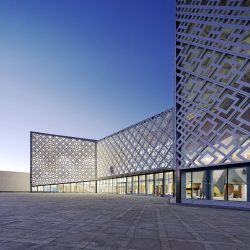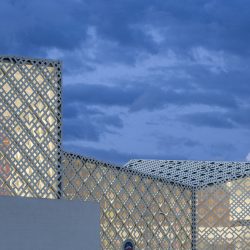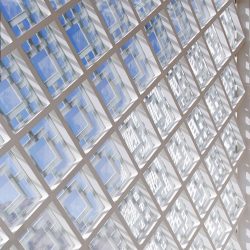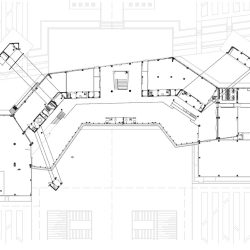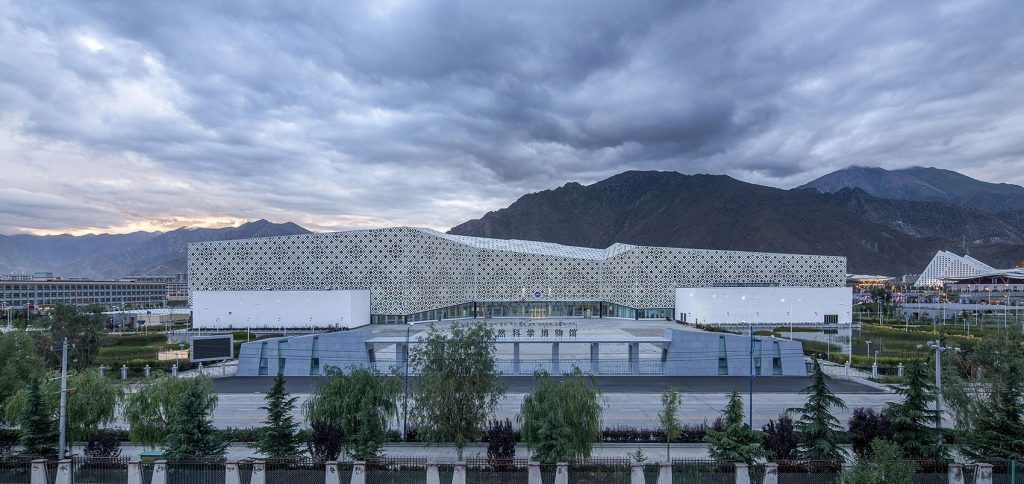
Cendes Design . photos: © Arch Exist/SHUHE PHOTO
Science, the crystallization of human intelligence, is often associated with academia and cultures within higher institutes. Disseminating scientific spirit for intellectual progression and innovation, museum spaces bridge the sacred production of science and the public. As a hinterland from the populated east mainland, Tibet remains a place of mysterious majesty for its well-known landscape. Geographic constraints blocked the dissemination of sciences local to Tibet, in which the establishment of The Tibet Museum of Natural Science commemorates the wisdom and knowledge of the area.
Till today, Tibetan cultures remain unsullied from the external society. Ranging from Potala Palace to Jokhang Temple, most well-known Tibetan buildings follow the route of traditional Tibetan architectural styles, combining climate adaptations and Buddhist aesthetic symbols. Cendes were able to incorporate such architectural features of the old by designing its own facade patterns. Inspired by Mandala (曼荼罗) and Tibetan lucky charms (吉祥结), Cendes’ design team synthesized these visual symbols to form a culturally significant pattern for the entire building facade. When sunlight shines through the museum atrium, the visitor can also perceive the pattern projected onto the inner structure of the building. Mandala means the center of the universe, and Tibetan lucky charm wishes for peace in the world.
Beyond this geometric representation, Cendes also recognizes the symbolic power of architectural forms. The building meanders across the landscape, its body in the shape of a white Hada looking from above. Hada, a silk scarf that visitors of Tibet are bestowed upon by local people, were used in the architectural language of the museum to welcome and invite people to learn about Tibet.
In consideration of conserving the natural environment in Tibet, sustainable adaptations in the structure and construction were also central to Cendes. Regarding energy usage in the building, Cendes utilized the geothermal and solar energy resources of the Tibetan Plateau. Cendes also invited AS Studio (France) to advance and advise on the facade design, in which the density of patterns was calculated to control the amount of sunlight, optimizing the indoor temperature and saving energy consumption. Regarding structures, Cendes collaborated with seismic elastic-plastic research at Tongji University to investigate safety solutions for earthquakes in Tibetan areas.
Museum designs exhibit how architecture integrates beauty. The modern architectural language of the Tibet Museum of Natural Science declares its forward-think pursuit in science; yet, its recognition of Tibetan traditions manifests in the details of its design. Architectural abstraction and innovation became clear in Cendes’ reinvention of the facade pattern, integration of engineering skills, and adaptions to local conditions.
_





